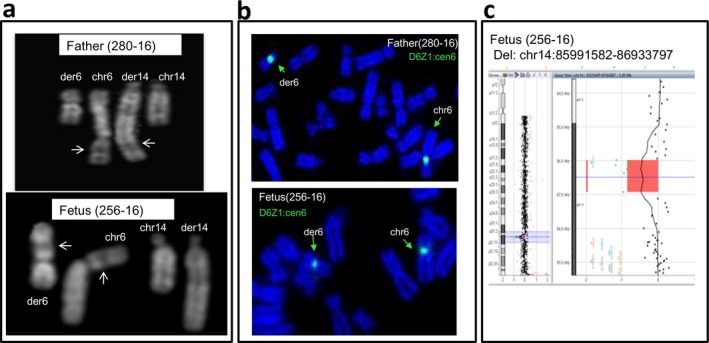Figure 3.

Case 2: rearrangements of chromosome 6 and chromosome 14 in father (280‐16) and fetus (256‐16). (a) Q‐banding revealed different banding patterns of derivative chromosomes 6 (der 6) and 14 (der 14) in father's (280‐16) karyotype compared to der(6) and der(14) of fetus (256‐16): Arrows indicate band 6p21 that appears located at the end of the der(14) in father metaphases (chromosome 6 is upside down to show the regions of homology), while it remains in the der(6) in fetus metaphases. (b) Fluorescence in situ hybridization on DAPI‐stained chromosomes of father (280‐16) and fetus (256‐16) with probe D6Z1 (cen6, green) shows the signal at the end of the paternal der(6) and almost in the middle of the fetus der(6). (c) Array CGH data displaying the de novo ~1Mb deletion (del) on fetus (256‐16)
